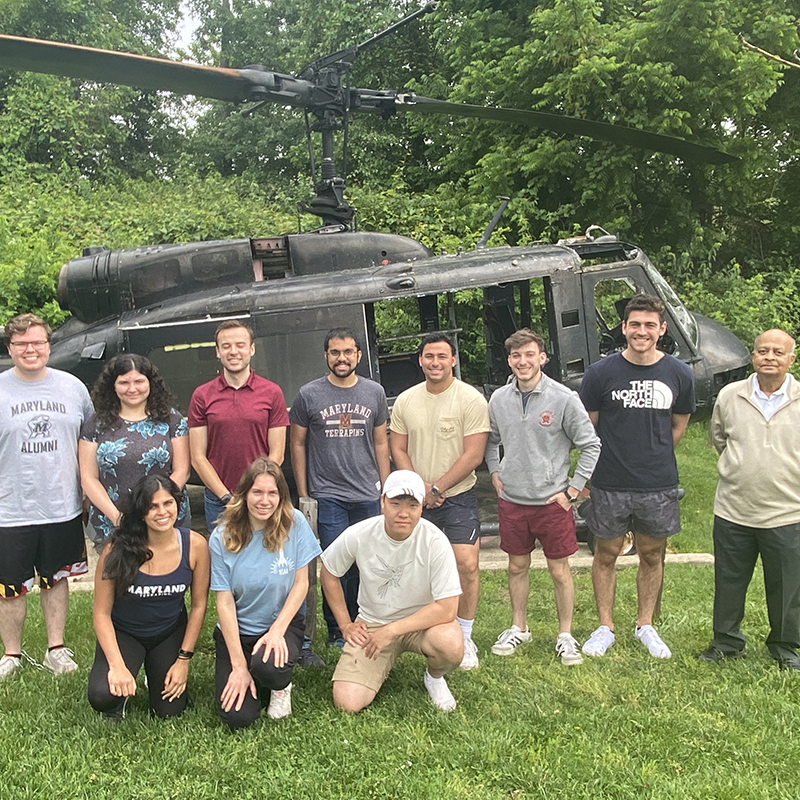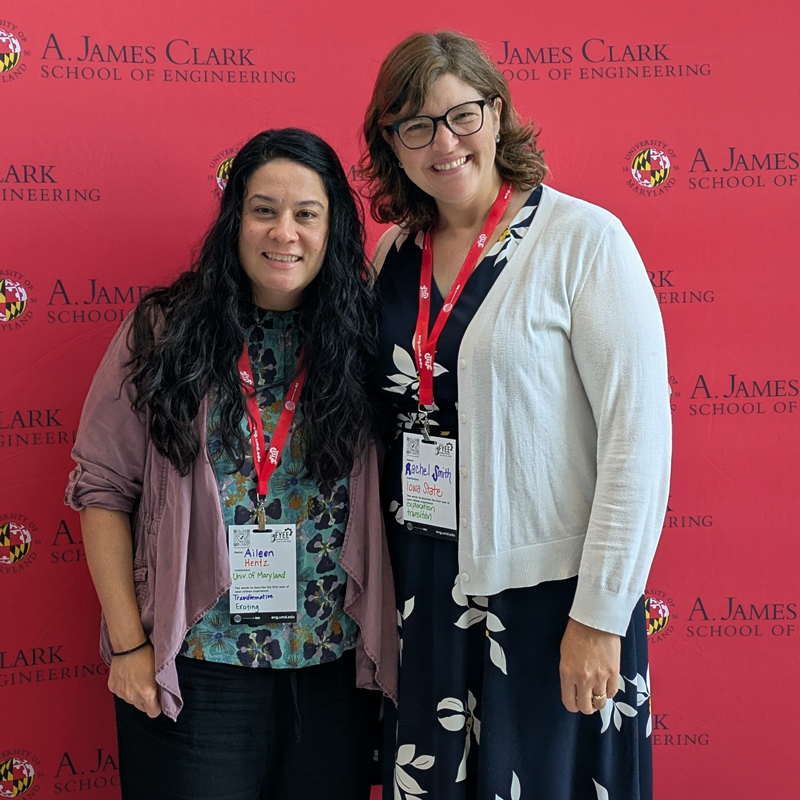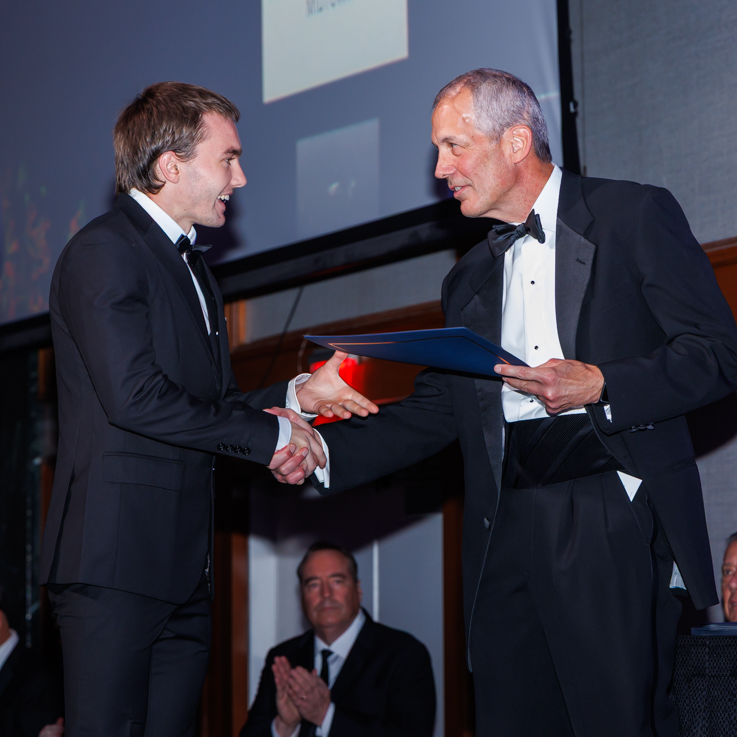News Story
UMD Undergraduate Team Wins VFS Competition
The Vertical Flight Society (VFS) recently announced the winners of the 39th Annual Student Design Competition, and the University of Maryland (UMD) department of aerospace engineering (AE) undergraduate team took first place. The UMD VFS team has a history of performing exceptionally well in the VFS competition and is advised by Professor Inderjit Chopra, Professor James Bader, and Senior Research Scientist VT Nagaraj.
 “Participating in the Student Design Competition was a wonderful experience! It took a lot of work as a team to make a fairly thorough conceptual design from the ground up, but the effort was definitely worth it,” said undergraduate student Samuel Allgaier. “Seeing all of our work come together in the final design was even more rewarding than I could have imagined!”
“Participating in the Student Design Competition was a wonderful experience! It took a lot of work as a team to make a fairly thorough conceptual design from the ground up, but the effort was definitely worth it,” said undergraduate student Samuel Allgaier. “Seeing all of our work come together in the final design was even more rewarding than I could have imagined!”
Each year the VFS partners with a sponsor to produce a request for proposals (RFP). This year, the VFS was sponsored by Bell Textron, and the RFP presented the student teams with a particularly unique challenge. The RFP, titled “eVTOL Air Taxi for Passengers with Reduced Mobility,” asked the teams to create an all-electric take-off and landing vehicle (eVTOL) that could accommodate passengers with reduced mobility (PRM). Because of this, the eVTOLs had to be designed with special considerations, including passenger comfort and safety.
In the future, eVTOLs might play an integral role in transportation between cities and in metropolitan areas, and it’s important that these vehicles are able to accommodate all potential passengers, including those with disabilities. The UMD team was excited to work on an eVTOL with equity and accessibility at the forefront of the design.
The UMD undergraduate team was comprised of 10 students who enrolled in a two semester-long course centered on the engineering and design of rotorcraft vehicles. The first semester involved a great deal of coursework and education. Though each student in the course was an AE senior, they had little to no experience with VTOLs.
“It’s not like an airplane,” said instructor Nagaraj. “There are a lot of differences with helicopter aerodynamics, structures, and technology. Every year, students come to class and usually don’t have any exposure to helicopters at all.”
After studying VTOLs, the students worked together to develop their own design that met the requirements of the RFP. The course required dedication, creativity, and teamwork in order to succeed in the VFS competition, but the professors and mentors were there to guide the students through every step of the process.
“In a design class, the students not only learn to synthesize various disciplines to fulfil the requirement as specified in the RFP by a specific industry, but equally importantly, carry out the work as a team with due diligence to the works being carried out by other team members,” said Professor Chopra.
Vivek Uppoor, team captain of the undergraduate team, was especially excited to work on this project. He explained that the semester of coursework flew by, and then, the design process was rigorous but rewarding.
“We were actually a very cohesive team. We all realized that we had an important role to play in designing the helicopter, and we combined our knowledge and designs to develop an effective vehicle for this year’s challenge,” said Uppoor. “I thought it was really cool to work with everybody. It’s been an amazing experience.”
The undergraduate team came together to design an energy-efficient single main rotor eVTOL called, “Blitzen.” The team’s design took the top spot at the VFS competition, and they were awarded a total of $3,000. Additionally, two team members are invited to attend the 79th Annual Forum and Technology Display in May 2023.
Published September 16, 2022









